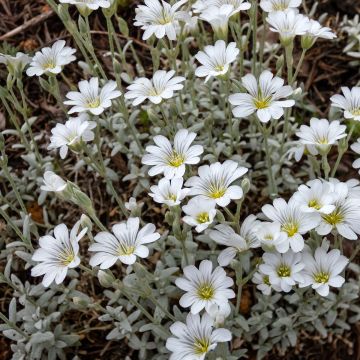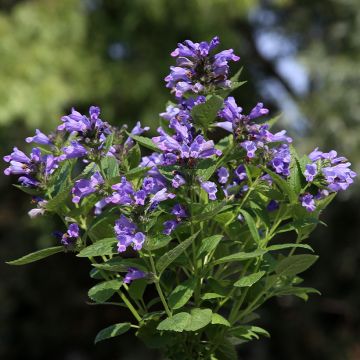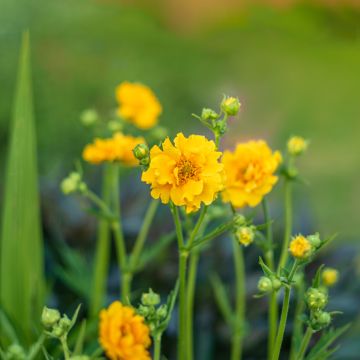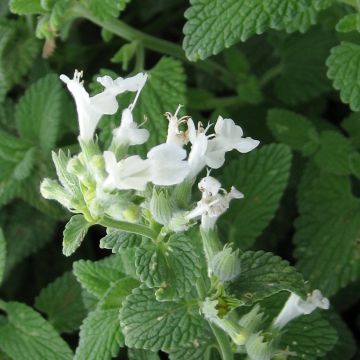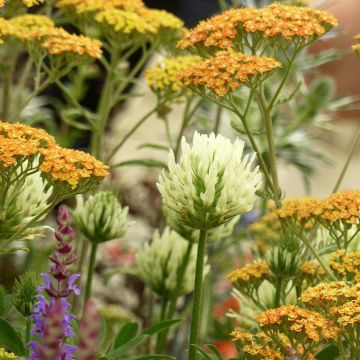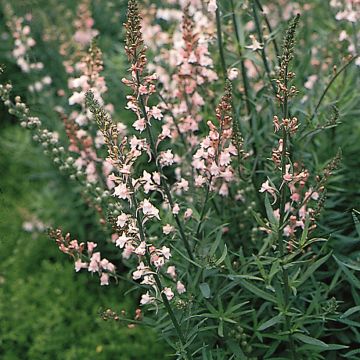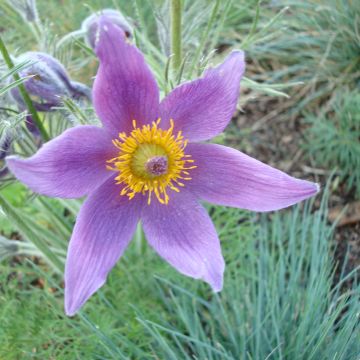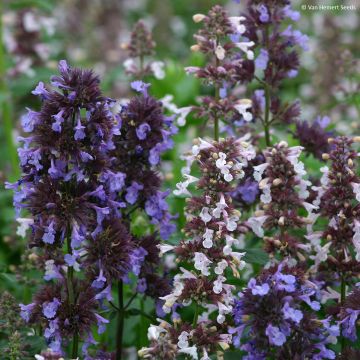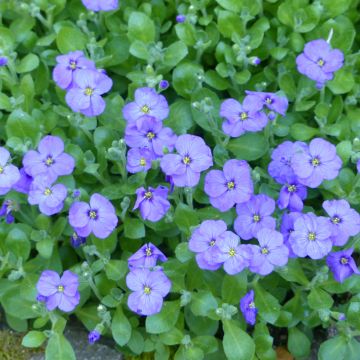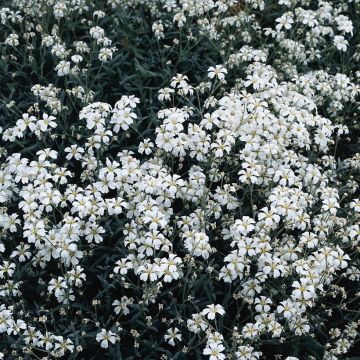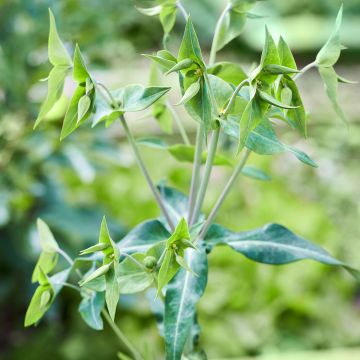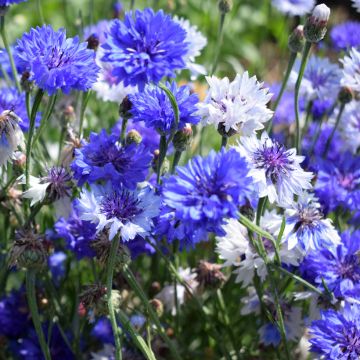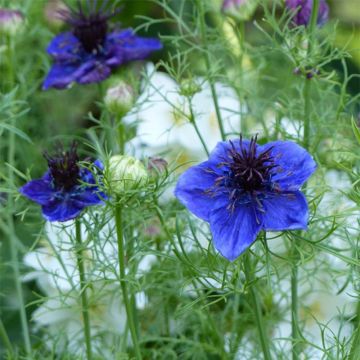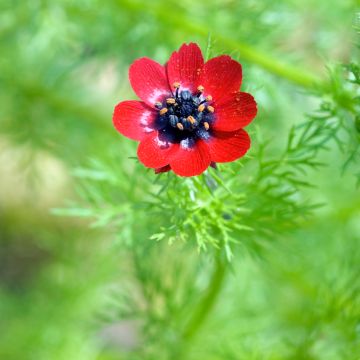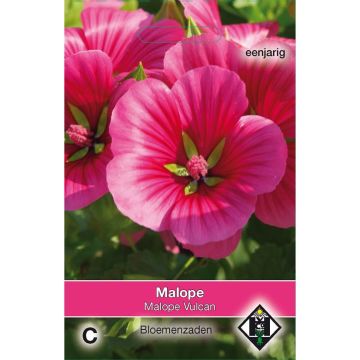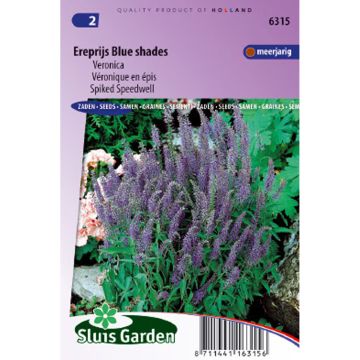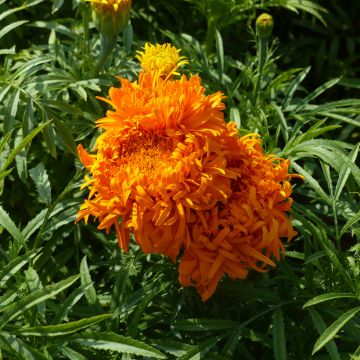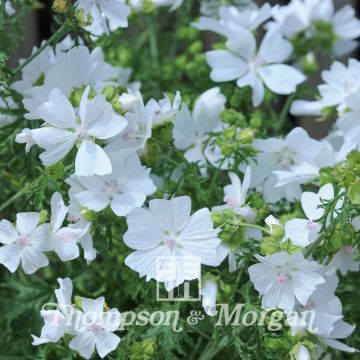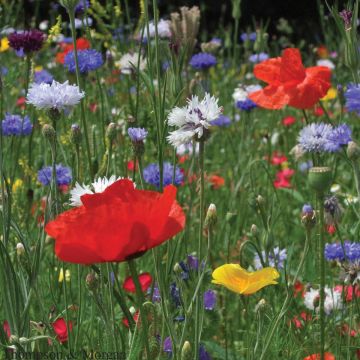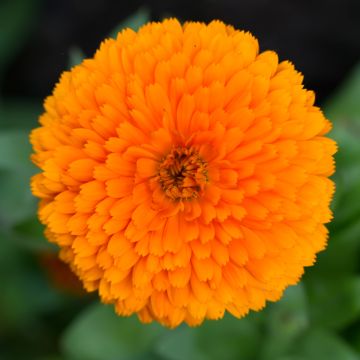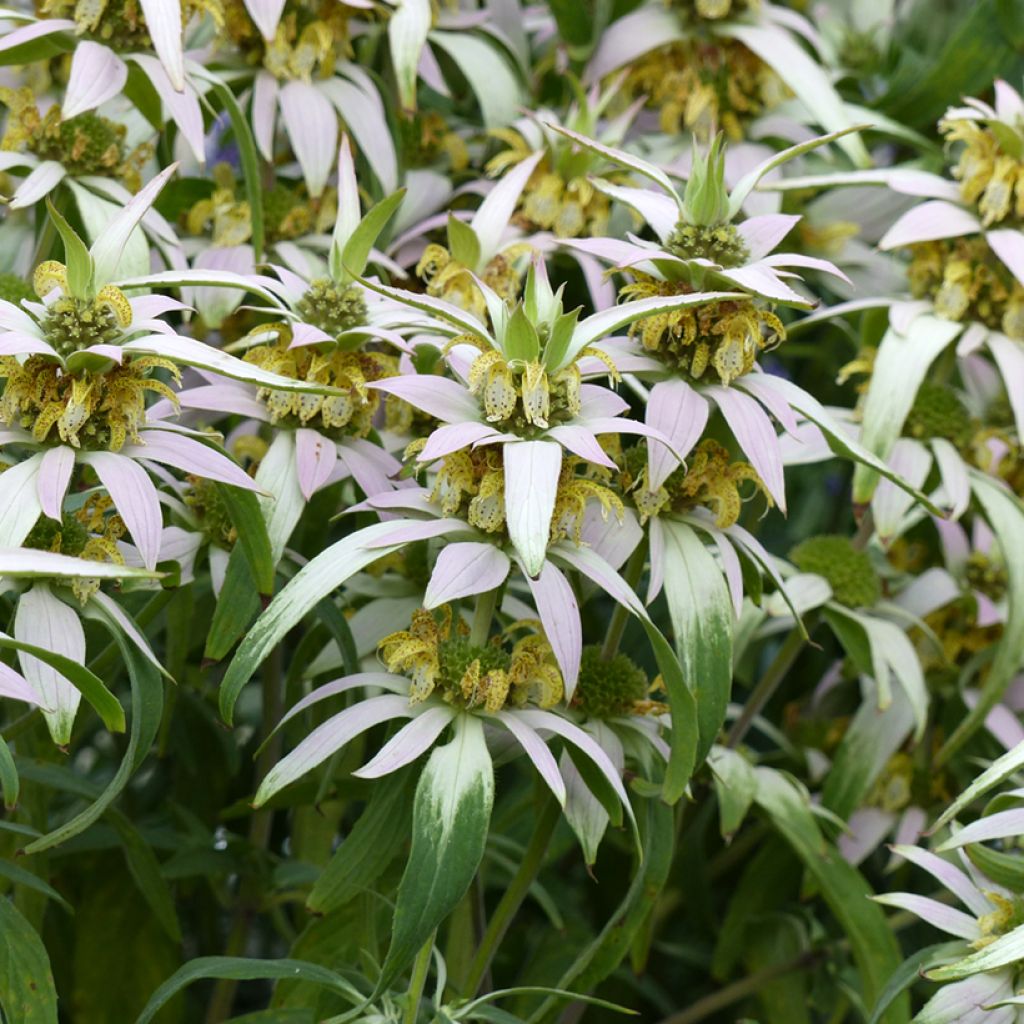

Monarda punctata - Horsemint seeds
Monarda punctata - Horsemint seeds
Monarda punctata
Spotted beebalm, Horsemint
This item cannot be shipped to the selected country
Dispatch by letter from €3.90
More information
Schedule delivery date,
and select date in basket
This plant carries a 6 months recovery warranty
More information
We guarantee the quality of our plants for a full growing cycle, and will replace at our expense any plant that fails to recover under normal climatic and planting conditions.
Seed-only orders are dispatched by sealed envelope. The delivery charge for seed-only orders is €3.90.
Does this plant fit my garden?
Set up your Plantfit profile →
Description
The Spotted Bee Balm (Monarda punctata) is a native aromatic perennial plant from eastern North America that blooms all summer. Its small flowers surrounded by colourful bracts are arranged in whorls, giving the flowering an unusual and charming appearance. Appreciated by pollinators, this beautiful bee balm thrives in sandy, well-drained soils, in full sun. It will bring a delightful rural touch to flower meadows and wildflower beds.
A member of the Lamiaceae family, Spotted Bee Balm is perennial or sometimes biennial depending on the climate. It is a botanical species that grows in sandy and coastal meadows ranging from Quebec to Florida, and down to Texas. It is found in rather dry, often disturbed areas, on poor soils. This fast-growing plant reaches between 30 cm and 60 cm in height. Its square, brownish or purple stems, bear lanceolate, green, 2 to 7 cm long leaves, arranged oppositely which are aromatic when crushed. Its small tubular flowers are dotted with purple on a light yellow background. They are carried in staggered whorls on the stem, surrounded by bracts in shades of pink, lavender, or cream. Flowering occurs from June to September, followed by the formation of small seeds in brownish capsules. The above-ground vegetation is deciduous. This means that its leaves fall at the end of the growing season, typically in autumn, before the plant goes dormant for the winter. This bee balm is often described as a plant with a relatively short lifespan, but it can persist in the garden through self-seeding.
The Spotted Bee Balm is charming in naturalised meadows, especially on poor, sandy soils. It adds a wild touch to flower beds, while attracting a variety of wildlife. Pair it with American plants that thrive in similar environments, such as Asclepias tuberosa (Butterfly Weed), a grass like Schizachyrium scoparium, Penstemon barbatus 'Coccineus', and Rudbeckia 'Prairie Sun'.
The young leaves can be used like marjoram, in salads or to flavour sauces.
Report an error about the product description
Flowering
Foliage
Plant habit
Botanical data
Monarda
punctata
Lamiaceae
Spotted beebalm, Horsemint
Monarda arkansana, Monarda correllii
North America
Other Perennial flower seeds
Planting and care
Direct sow Punctate Monarda (Monarda punctata) in the ground in autumn or spring. Before sowing, it is important to prepare the soil by carefully weeding it and ensuring that it is well-drained, preferably sandy or light.
The seeds require cold stratification to germinate, meaning they need to spend several weeks at low temperatures to break their dormancy. For this, you can either sow directly in late autumn, letting nature handle this cold period, or keep the seeds in the refrigerator for 4 to 6 weeks before sowing in spring.
Once the seeds are sown, only lightly cover them with soil, as they require some light to germinate. Under optimal conditions, germination occurs in 2 to 4 weeks. Punctate Monarda thrives in full sun, tolerates poor and fairly dry soils. It requires little watering once established and does not need fertiliser, making it an ideal plant for naturalised meadows.
It is important to grow this monarda in well-drained soil to avoid excessive moisture that can lead to root rot. Also, remember to deadhead the flowers to promote new flowering and prevent excessive self-seeding if you do not want it to naturalise in your garden.
Sowing period
Intended location
This item has not been reviewed yet - be the first to leave a review about it.
Flower seeds
Haven't found what you were looking for?
Hardiness is the lowest winter temperature a plant can endure without suffering serious damage or even dying. However, hardiness is affected by location (a sheltered area, such as a patio), protection (winter cover) and soil type (hardiness is improved by well-drained soil).

Photo Sharing Terms & Conditions
In order to encourage gardeners to interact and share their experiences, Promesse de fleurs offers various media enabling content to be uploaded onto its Site - in particular via the ‘Photo sharing’ module.
The User agrees to refrain from:
- Posting any content that is illegal, prejudicial, insulting, racist, inciteful to hatred, revisionist, contrary to public decency, that infringes on privacy or on the privacy rights of third parties, in particular the publicity rights of persons and goods, intellectual property rights, or the right to privacy.
- Submitting content on behalf of a third party;
- Impersonate the identity of a third party and/or publish any personal information about a third party;
In general, the User undertakes to refrain from any unethical behaviour.
All Content (in particular text, comments, files, images, photos, videos, creative works, etc.), which may be subject to property or intellectual property rights, image or other private rights, shall remain the property of the User, subject to the limited rights granted by the terms of the licence granted by Promesse de fleurs as stated below. Users are at liberty to publish or not to publish such Content on the Site, notably via the ‘Photo Sharing’ facility, and accept that this Content shall be made public and freely accessible, notably on the Internet.
Users further acknowledge, undertake to have ,and guarantee that they hold all necessary rights and permissions to publish such material on the Site, in particular with regard to the legislation in force pertaining to any privacy, property, intellectual property, image, or contractual rights, or rights of any other nature. By publishing such Content on the Site, Users acknowledge accepting full liability as publishers of the Content within the meaning of the law, and grant Promesse de fleurs, free of charge, an inclusive, worldwide licence for the said Content for the entire duration of its publication, including all reproduction, representation, up/downloading, displaying, performing, transmission, and storage rights.
Users also grant permission for their name to be linked to the Content and accept that this link may not always be made available.
By engaging in posting material, Users consent to their Content becoming automatically accessible on the Internet, in particular on other sites and/or blogs and/or web pages of the Promesse de fleurs site, including in particular social pages and the Promesse de fleurs catalogue.
Users may secure the removal of entrusted content free of charge by issuing a simple request via our contact form.
The flowering period indicated on our website applies to countries and regions located in USDA zone 8 (France, the United Kingdom, Ireland, the Netherlands, etc.)
It will vary according to where you live:
- In zones 9 to 10 (Italy, Spain, Greece, etc.), flowering will occur about 2 to 4 weeks earlier.
- In zones 6 to 7 (Germany, Poland, Slovenia, and lower mountainous regions), flowering will be delayed by 2 to 3 weeks.
- In zone 5 (Central Europe, Scandinavia), blooming will be delayed by 3 to 5 weeks.
In temperate climates, pruning of spring-flowering shrubs (forsythia, spireas, etc.) should be done just after flowering.
Pruning of summer-flowering shrubs (Indian Lilac, Perovskia, etc.) can be done in winter or spring.
In cold regions as well as with frost-sensitive plants, avoid pruning too early when severe frosts may still occur.
The planting period indicated on our website applies to countries and regions located in USDA zone 8 (France, United Kingdom, Ireland, Netherlands).
It will vary according to where you live:
- In Mediterranean zones (Marseille, Madrid, Milan, etc.), autumn and winter are the best planting periods.
- In continental zones (Strasbourg, Munich, Vienna, etc.), delay planting by 2 to 3 weeks in spring and bring it forward by 2 to 4 weeks in autumn.
- In mountainous regions (the Alps, Pyrenees, Carpathians, etc.), it is best to plant in late spring (May-June) or late summer (August-September).
The harvesting period indicated on our website applies to countries and regions in USDA zone 8 (France, England, Ireland, the Netherlands).
In colder areas (Scandinavia, Poland, Austria...) fruit and vegetable harvests are likely to be delayed by 3-4 weeks.
In warmer areas (Italy, Spain, Greece, etc.), harvesting will probably take place earlier, depending on weather conditions.
The sowing periods indicated on our website apply to countries and regions within USDA Zone 8 (France, UK, Ireland, Netherlands).
In colder areas (Scandinavia, Poland, Austria...), delay any outdoor sowing by 3-4 weeks, or sow under glass.
In warmer climes (Italy, Spain, Greece, etc.), bring outdoor sowing forward by a few weeks.

































